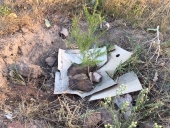I can tell you what I found from some tests I did that were published and some studies done on soil compaction.
The key is pore space in the soil.
If you add organics to permanent crops the soil tends to revert back to the soil profile it was before over the years.
You have leaf litter layer on top, than organic declining until you hit subsoil.
I was working with host under maples in silt/clay soil.
If you put iron rods in the soil you will get red rust and black iron on the rods.
The black iron is where soil went anaerobic. Roots need oxygen and they tend to die without it.
Many times oxygen is the limiting factor in how far roots can go.
Also a root tip grows into a opening and expands. So there has to be a minimum pore space for the root tip to grow into.
What I found is if I added non-organic materials to the subsoil areas that are lower in organics I tend to create Macro and Meso pore spaces for the long run.
Once these are created roots will grow into them providing organics and allowing water storage and oxygen flushing as water fills pore space and drains away.
I worked with expanded shale, perlite, porous sand, non-toxic bottom ash, broken bricks, pottery, etc. The key was working with a porous material that is non-toxic and does not break down.
I also found that carbon as in bio char tended to last reasonably well.
If you double dig and add this type of material to clay at 20 to 30 percent you should get good results.
Also by adding this to the clay instead of organic material you do not get wicking action you can get with high organic content. So you do not get the pond effect that kills roots.
Also organic material mixed in soil decays. Sometimes the rate of decay is very fast. The non-organic material will not decay.
So once you have subsoil and soil porosity ok you can mulch and let soil critters do their stuff and have your different concentrations of organics that will develop stable levels within your soil over time.
My two cents worth






































